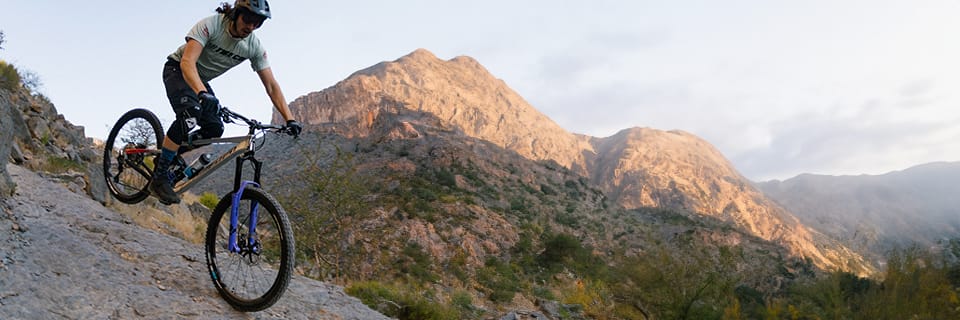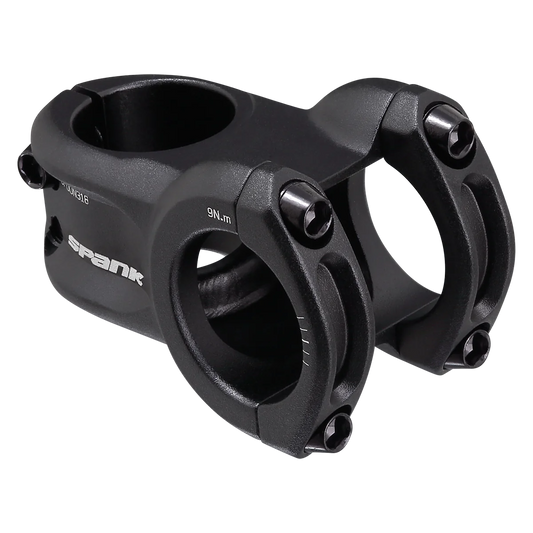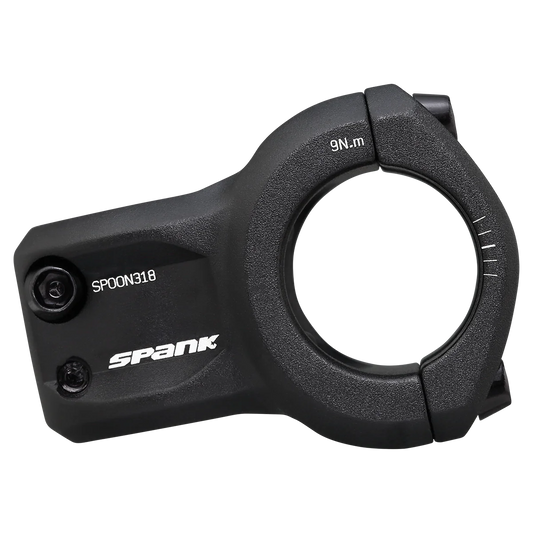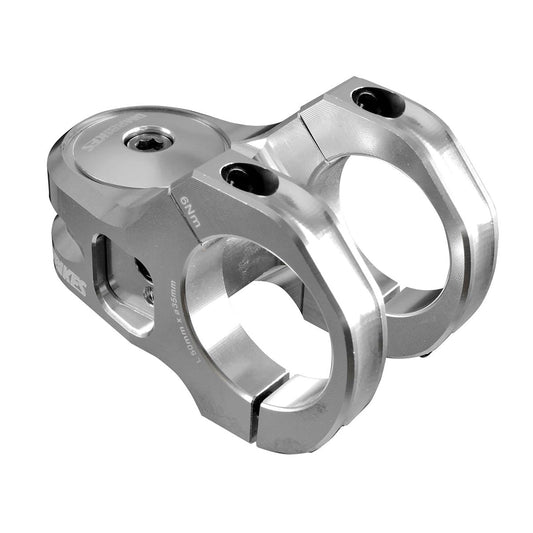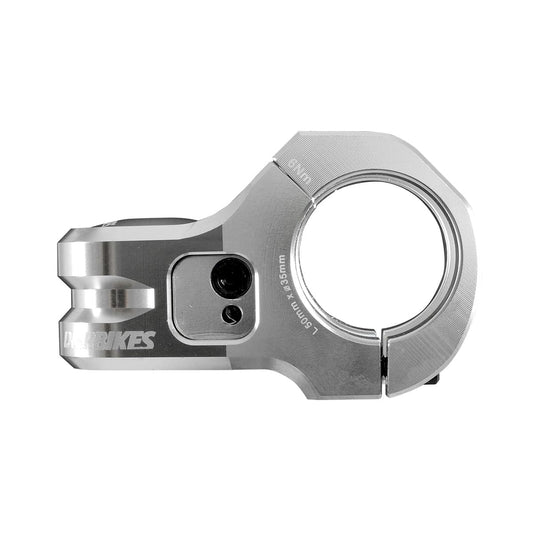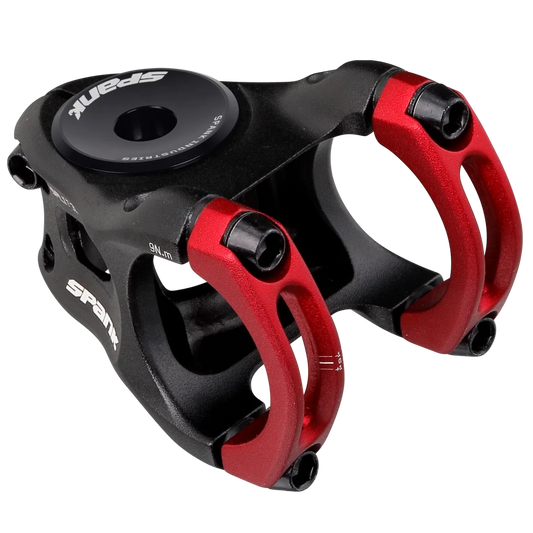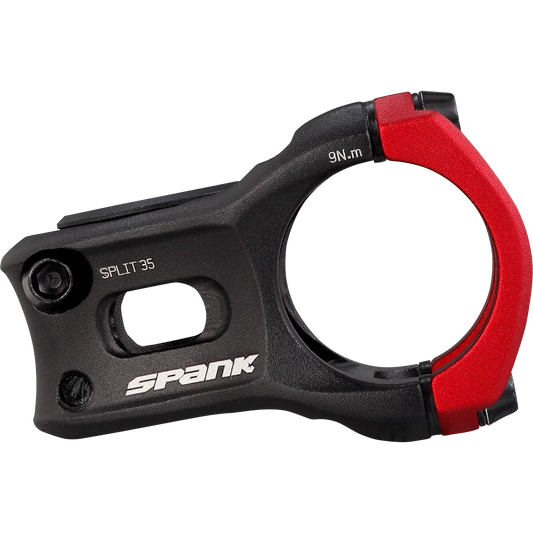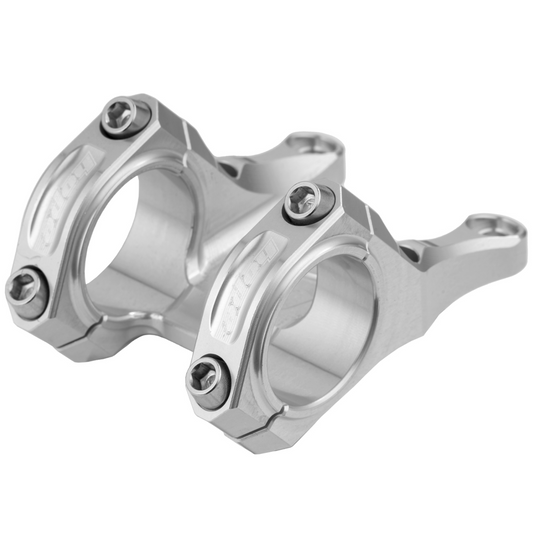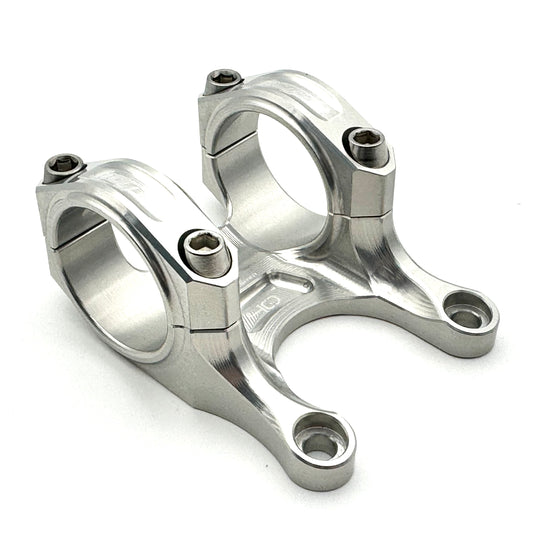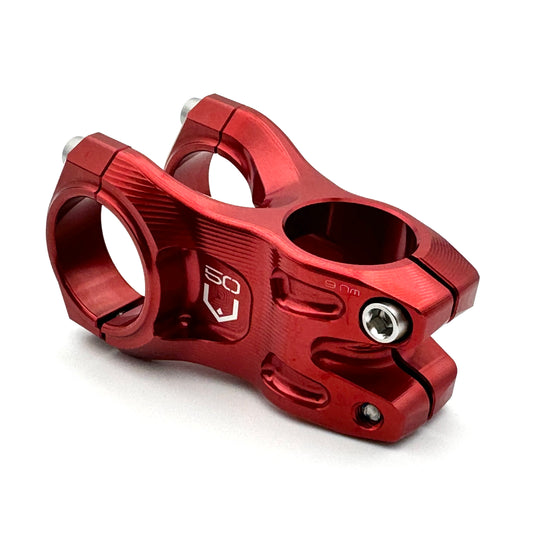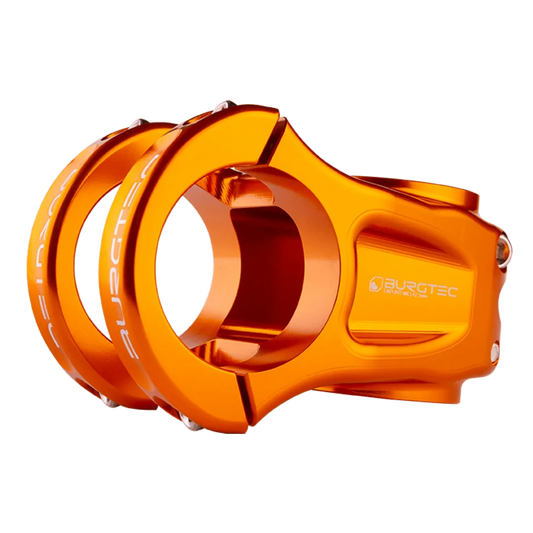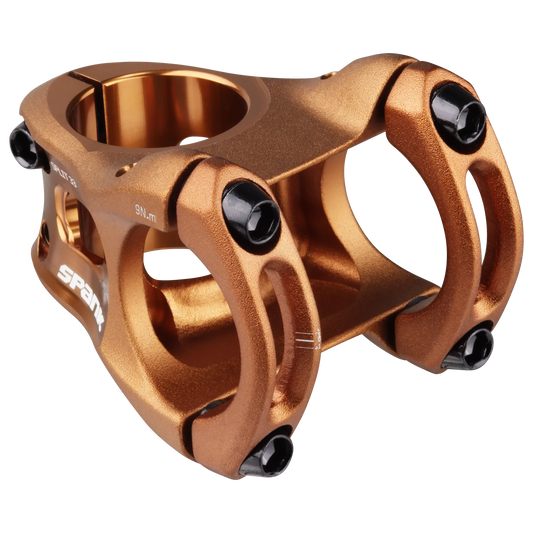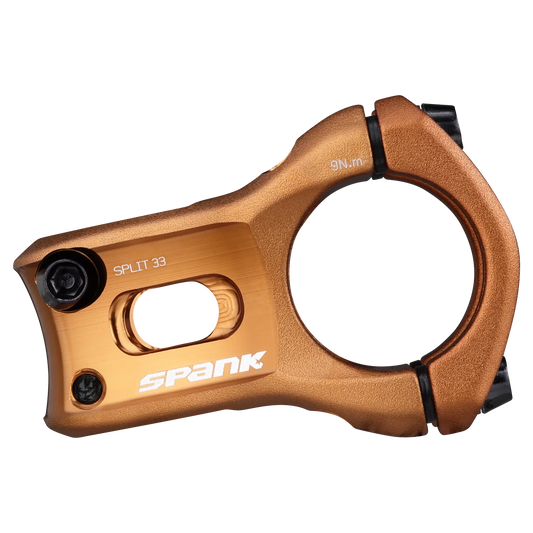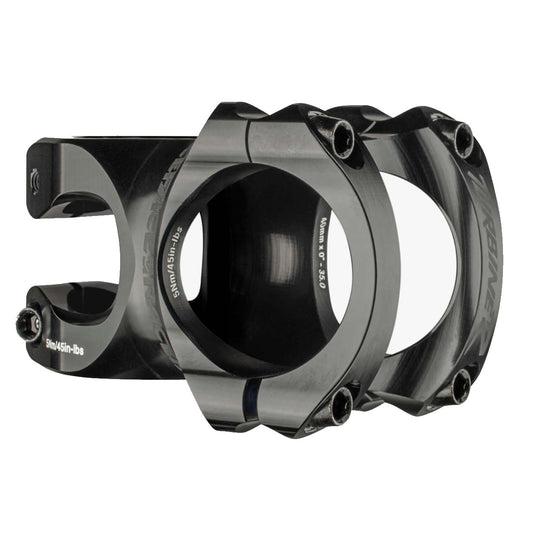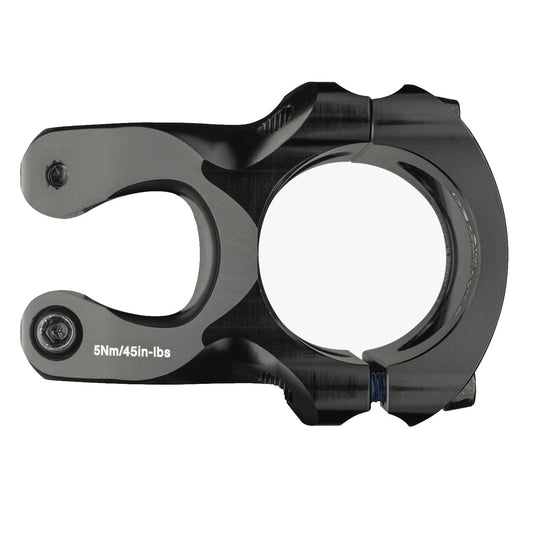The MTB stem is the part that connects the handlebars to the rest of your bike, and determines your riding position and feel. The choice of this component is not to be taken lightly, so here are a few tips.
Standard
- Fork steerer tube diameter: 1"1/8 or 1.5".
- Handlebar diameter: 25.4; 31.8 or 35 mm
- Length
- Angle
Stem types
Two points are directly dependent on the rest of your equipment.
Mounting and length
Mounting the stem on the fork steerer tube according to diameter a diameter of this part, which may be 1"1/8 or 1.5"; and mounting the MTB handlebars which can be standard 25.4; 31.8 or, more rarely, 35 mm.
 |
 |
There is also a specific DH/Freeride assembly. On full-suspension mountain bikes, stems are fitted directly to the tee*. c upper forks tee*Element of a fork that links the pivot* and the plungers.This assembly is called the Direct Mount*d.
 |
 |
Length e is one of the two characteristics you can choose. The average length for all mountain bike disciplines is 80 mm. In addition to lengthening your position on the bike, a longer stem will also have an impact on the steering, making it more stable but less responsive. Conversely, if you use a shorter stem to shorten your position, the steering will be more responsive but less stable.

Tilt
The second parameter you can choose is the inclination. f. This is the angle between the stem axis and the axis perpendicular to the fork steerer tube. The average for all mountain bike disciplines is between 7° and 10°. A stem's inclination will only impact your position on the bike: the greater the angle, the higher your riding position will be, so you'll be more upright and further back on your bike; conversely, a lower stem will tend to lay you back and load the front of the bike. Please note that some stems are reversible, allowing you to have either an upward or a downward angle.

Which stem to choose?
The average mountain bike stem is 80 mm with an 8° angle, but this may vary according to your riding style and your position on the bike, depending on its geometry.
-
Hiking
For mountain biking, the classic 80 mm / 8° stem is often the best compromise between comfort and versatility.
-
Cross-Country
For sporty outings on a semi-rigid mountain bike, it's not uncommon to opt for a slightly longer, downward-angled stem such as the 100 mm / -8° for a more aggressive, sporty stance.
-
All-Mountain / Enduro
ForAll-Mountain orEnduroa 50 mm / 5° stem offers more responsive handling and a more rear-mounted position. Perfect for steep, technical descents.
-
DH/Freeride
In terms of DH / Freerideframe geometries are generally designed for very short stems, between 25 and 50 mm, for maximum manoeuvrability and optimum positioning on the steepest slopes. The angle of inclination is often induced by the shape of the stem, between 15° and 35°, to further enhance the riding position.
Découvrez tous nos conseils & Tutoriels
